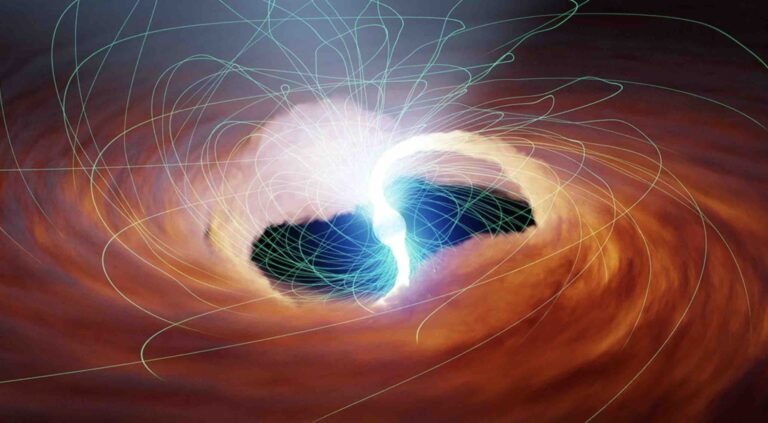In our observations of the cosmos, there is a maximum luminosity objects like stars and the rotating accretion discs produced around black holes can achieve, which results when outgoing radiation and inward-acting gravitational forces are balanced out.
This cosmic balancing act, known as the Eddington limit, describes what is referred to in physics as hydrostatic equilibrium. When a star’s luminosity begins to exceed this universal limit, the result is the release of powerful stellar winds propelled by radiation from its outer layers.
Such is the case with the sources of ultra-luminous X-rays (ULX) observed by astronomers, which generate an estimated 10 million times more energy than our Sun can produce and thereby appear to exceed the Eddington limit by as much as 500 times. But what could possibly allow for this?
Now, the authors of a recent study with help from NASA believe they may be able to shed some light on this unusual phenomenon, with new insights into whether these distant mega light emitters may indeed be defying the Eddington limit and offering a new hypothesis as to how it might be occurring.
In a paper by a team of researchers led by principal author Matteo Bachetti, an astronomer with Italy’s National Institute of Astrophysics’ Cagliari Observatory, they report the first successful measurement of a ULX, with help from NASA’s Nuclear Spectroscopic Telescope Array (NuSTAR). The team says their achievement has finally confirmed that ULXs are as bright as they appear to be, which they say could involve the strong magnetic fields they produce.
The problem with testing this hypothesis, the team says, has to do with reproducing such intense magnetic conditions, which exceed the capabilities of even the most powerful magnets anywhere on Earth by many billions of times.
When photons encounter objects, they exert a small amount of force against them, which in large enough amounts can exceed the force of gravity an object exerts. This, in essence, describes what happens as an object reaches its Eddington limit, where gas or other materials being drawn toward an object can, in theory, be pushed away from it. The research team behind the new paper said this is important since it is this material gravitating toward a ULX that is what causes the object’s unusually powerful luminosity.
In the past, scientists used to think that ULXs were probably black holes since they exhibit some of these characteristics, including the large amounts of luminous gas that surround them. That is until NuSTAR data revealed that a ULX called M92 X-2 was actually a neutron star, a celestial object that possesses less mass than a black hole, but which is formed by similar processes as a dying star collapses inward on itself.
The resulting gravitational pull exerted by neutron stars is equal to 100 trillion times the gravity we experience on Earth, drawing matter towards it at such speeds that tremendous amounts of energy are released, which astronomers are able to detect as high-energy X-ray light.
In their recent study, Matteo and his team also focused on M82 X-2, which they say robs around 9 billion trillion tons of material from its nearest neighboring star each year. Scientists can estimate the brightness of the ULX since they know the amount of material that reaches the neutron star’s surface each year. According to the team’s research, independent measurements of the brightness of M82 X-2 matched these calculations, allowing them also to confirm that M82 X-2 seemingly exceeds the Eddington limit.
However, it may be that the confirmation of the brightness of other ULXs in the future could reveal more about these processes, including whether this perceived phenomenon could arise from an illusion produced when a powerful X-ray emission is pointed directly at Earth. Hence, this might only give the appearance of a ULX looking like it is exceeding the Eddington limit.
Other possible explanations involve the distortion of atoms into elongated shapes by the intensity of these powerful magnetic fields, which could make it more difficult for photons to repel them, resulting in an increase in their maximum brightness potential.
According to Matteo, observations the team made allowed them to perceive the effects of the incredibly powerful magnetic fields produced by ULXs, even without the ability to recreate such impossible conditions on Earth.
“This is the beauty of astronomy,” Matteo said in a statement.
“Observing the sky, we expand our ability to investigate how the universe works,” he said.
Matteo and his team’s study, “Orbital Decay in M82 X-2,” appeared in The Astrophysical Journal and can be read online.
Micah Hanks is the Editor-in-Chief and Co-Founder of The Debrief. He can be reached by email at micah@thedebrief.org. Follow his work at micahhanks.com and on Twitter: @MicahHanks.

